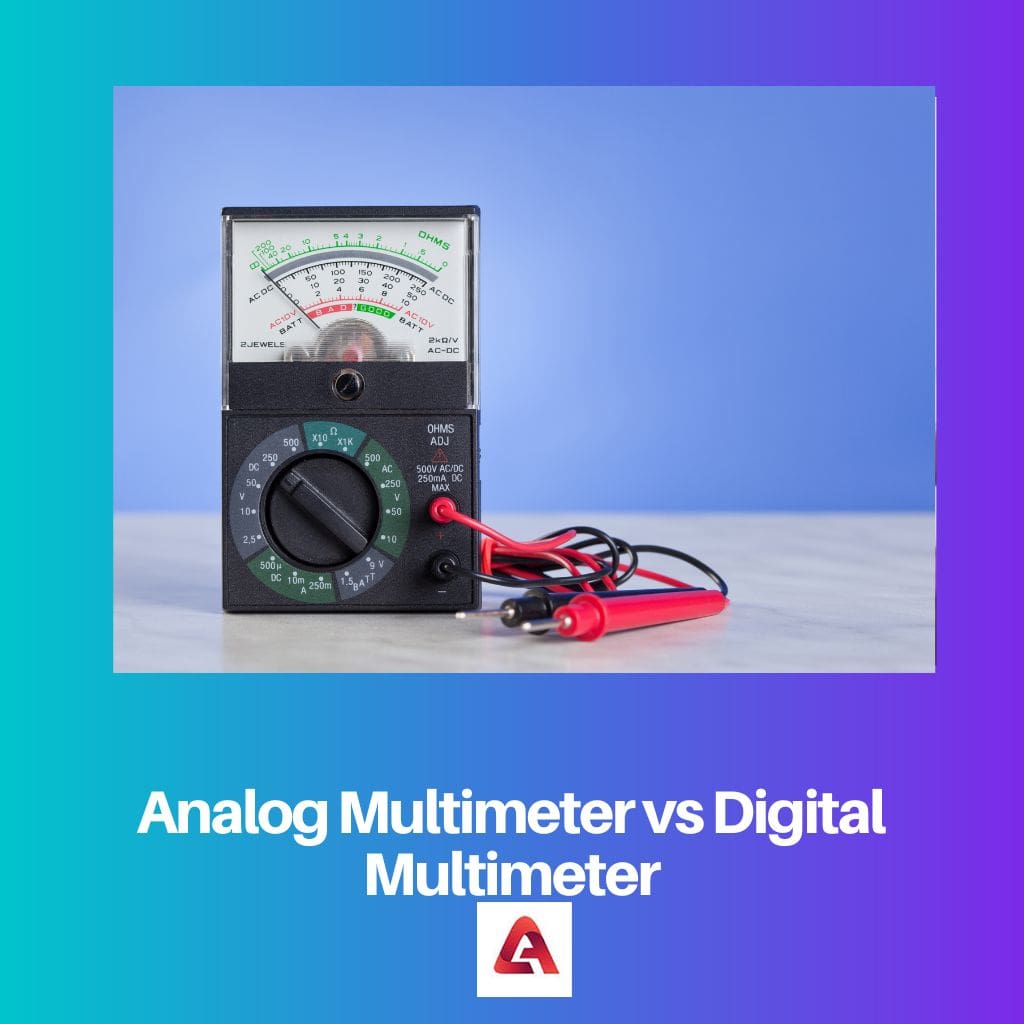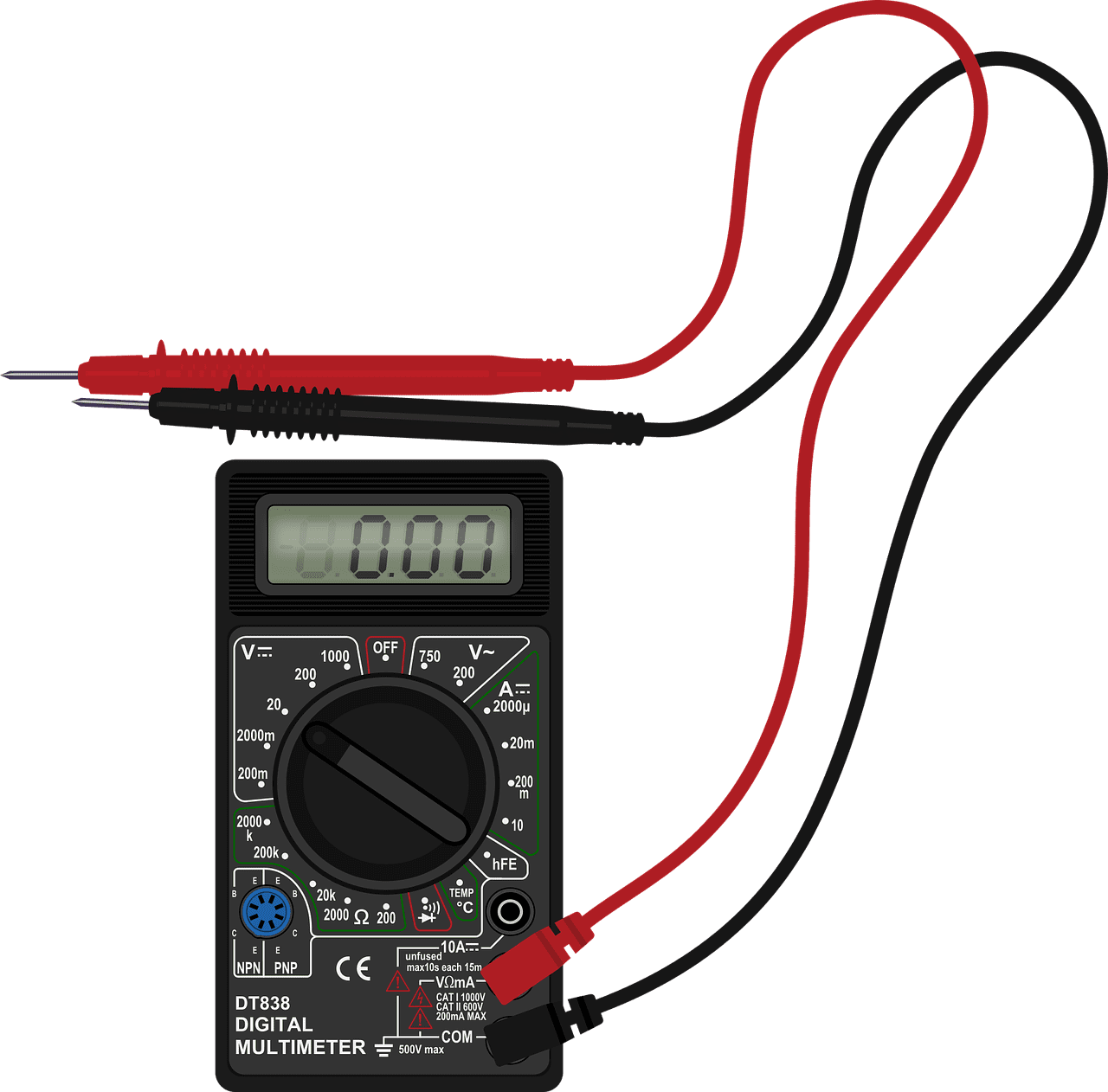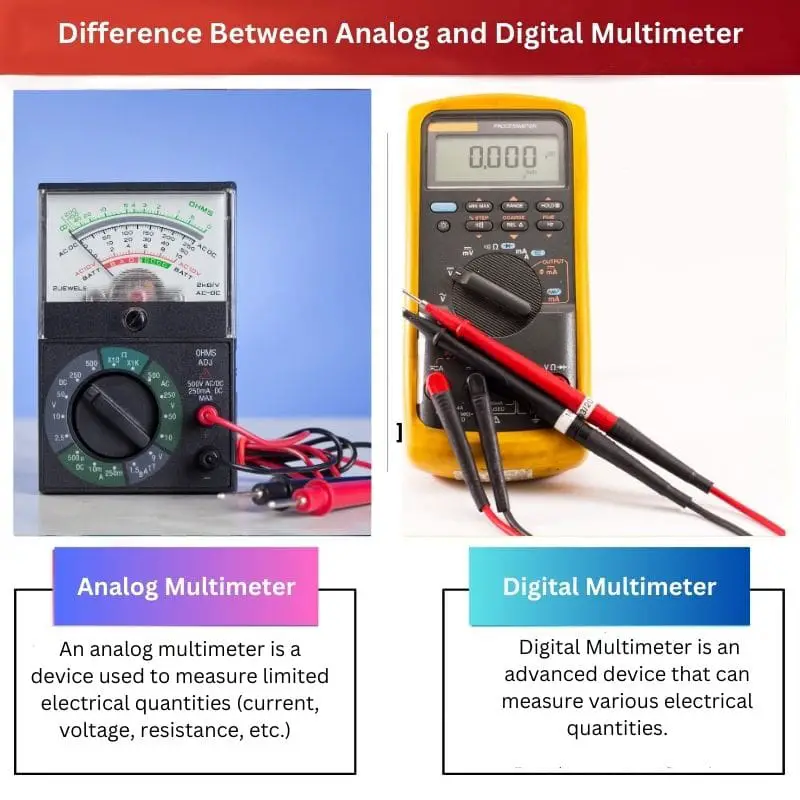Key Takeaways
- Analog Multimeters display measurements using a needle on a scale, while Digital Multimeters use a digital screen.
- Analog Multimeters have less accuracy than Digital Multimeters.
- Analog Multimeters may be more challenging to read for inexperienced users, whereas Digital Multimeters provide clear numerical readings.

What is Analog Multimeter?
An analog Multimeter is an electrical test device to measure electrical quantities like current, voltage, and resistance. In the analog Multimeter, a moving coil meter with a needle shows the results on the scale. It displays the respective value in analog form. Thus, it doesn’t need a converter.
It works on the principle of the d’Arsonval galvanometer. Analog Multimeters are calibrated manually, and the range has to be selected manually by rotating the knob. It provides reading on a scale against a pointer. The input resistance in an analog multimeter is not constant; it keeps changing with range.
Analog Multimeters have been used for many years in the electronic measuring industry. It is sometimes also known as VOA, as it can measure volts, ohms, and amps. Usually, it doesn’t require only a power source or electricity to measure resistance. Short circuit difficulties in electronic systems can be found with analog multimeters. Advanced analog multimeters offer extra features, such as testing modes for capacitors, diodes, and integrated circuits.
Standard analog multimeters measure with 3% accuracy. It doesn’t have advanced features. Its measurements include AC voltage, DC voltage, DC, and other measurements. Although quite economical, switched-range analog multimeters are problematic for beginners to read accurately, notably on resistance scales.

What is Digital Multimeter?
Digital multimeters, or DMM, are used by electricians and electrical contractors to measure quantities, including voltage, current, and resistance. It’s test equipment that provides various electronic measurement tasks in a single tool.
A multimeter is used for testing the voltage of AC, DC, and currents. It has three parts: a display screen, ports, and a knob. The display screen shows the values in mathematical digits on an LCD readout. The knob helps the user to select various jobs.
Additionally, digital multimeters have better accuracy levels. It is light in weight and can measure different electrical frequencies with the help of unique probes. Digital multimeters are very versatile and offer modern features to get accurate measurements.
However, a digital multimeter needs an electrical or power supply such as batteries. There are so many types of digital multimeters based on what they are being used for. The higher category multimeters have more power fuses that can help to protect electrical types of equipment connected to high-voltage input sources.

Difference Between Analog and Digital Multimeters
- Analog Multimeter indicates the value using a needle, while a digital multimeter shows the result on a digital display screen like LCD.
- Analog cannot perform advanced measurements and cannot provide accurate results like digital multimeters.
- The digital Multimeter comes comparatively in a small size than the Analog one.
- Analog Multimeter provides manual calibration, while digital multimeter has automatic calibration system.
- Analog Multimeter is cheaper than digital Multimeter in the market.
- An analog multimeter is less versatile than a digital multimeter. Digital multimeter offers various electronic measurements.
Comparison Between Analog and Digital Multimeter
| Parameters of Comparison | Analog Multimeter | Digital Multimeter |
|---|---|---|
| Definition | An analog multimeter is a device used to measure limited electrical quantities (current, voltage, resistance, etc.) | Digital Multimeter is an advanced device that can measure various electrical quantities. |
| Measuring Signal | Analog Multimeter indicates the value using a galvanometer. | It measures voltage with the help of an Analog-digital converter. |
| Reading | Shows the value on a printed scale. | Shows the value on a digital display. |
| Accuracy | Sometimes misinterpret the measurement. | Accurate measurement. |
| Calibration | Manual | Automatic |
| Usability | Sometimes difficult to use. | Comparatively easy to use. |

- https://pubs.acs.org/doi/abs/10.1021/acs.analchem.8b04635
- https://www.sciencedirect.com/science/article/pii/S092540052100705X








